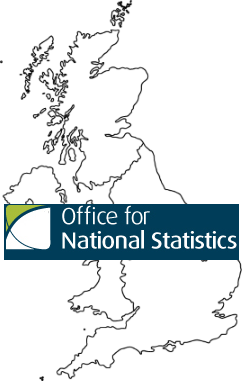Net migration to UK was 333,000 in 2015, 20,000 more than 2014 as emigration declines by 22,000
The latest Office for National Statistics (ONS) migration statistics report says that net migration to the UK in the year ending December 2015 rose to 333,000.
 You can read the quarterly report here.
You can read the quarterly report here.
The figure of 333,000 is a statistically insignificant 20,000 increase over the year ending December 2014.
The ONS found that immigration in 2015 had decreased by 2,000 over 2014, but this was offset by a 22,000 decline in emigration numbers.
The main points of the ONS report are as follows:
• In the year ending (YE) December 2015:
- Net Long-Term International Migration = +333,000 (up 20,000 from YE December 2014; not statistically significant)
- Immigration = 630,000 (down 2,000 from YE December 2014; not statistically significant)
- Emigration = 297,000 (down 22,000 from YE December 2014 ; not statistically significant)
• Net migration in YE December 2015 was 10,000 higher than the 323,000 published for YE September 2015.
• The increase in net migration was the result of a decrease in emigration, whereas immigration was at a similar level to the previous year. The decrease in emigration has been driven by a fall in the number of British citizens emigrating (down 14,000; not statistically significant).
• Net migration of EU citizens was estimated to be 184,000 (compared with 174,000 in YE December 2014; change not statistically significant). Non-EU net migration was 188,000 a similar level compared with the previous year (194,000).
• The estimate of immigration for EU citizens was 270,000, compared with 264,000 in YE December 2014 (a non statistically significant change). Immigration of non-EU citizens saw a decrease from 287,000 to 277,000 (not statistically significant).
• In YE December 2015, 308,000 people immigrated for work, an increase of 30,000 from the previous year and the highest estimate on record. Of these, 178,000 (58%) had a definite job to go to and 130,000 (42%) arrived looking for work – the latter figure being a statistically significant increase from 104,000 the previous year.
• Of all EU2 citizens who came to the UK in YE December 2015, 52,000 (84%) came for work-related reasons, a statistically significant increase of 17,000 from YE December 2014. Of these, 60% (31,000) arrived with a definite job to go to, a statistically significant increase of 17,000 from YE December 2014.
• Latest employment statistics from the Labour Force Survey show the estimated employment level of EU nationals (excluding British) living in the UK was 2.1 million in January to March 2016, 224,000 higher than the same quarter last year. British nationals in employment increased by 185,000 to 28.2 million and non-EU nationals in employment increased by 5,000 to 1.2 million. Over half of the growth in employment over the last year was accounted for by foreign nationals. (These growth figures represent the NET change in the number of people in employment, not the proportion of new jobs that have been filled by non-UK workers.)
• There were 630,000 National Insurance Number (NINo) registrations by EU nationals in YE March 2016, an increase of 1,000 (0%) on the previous year. For non-EU nationals, there were 195,000 NINo registrations in YE March 2016, an increase of 2,000 (0%) on the previous year.
• In YE March 2016, visas granted (non-EU, main applicants) for skilled work rose 1,316 (+2%) to 54,961. Total work visas granted decreased 1,609 (-1%) to 121,639.
• Long-term immigration for study was estimated to be 167,000 in YE December 2015, compared with 191,000 in YE December 2014 (not statistically significant). This was driven by a statistically significant decrease of 22,000 for non-EU citizens (112,000).
• There were 41,563 asylum applications (including dependants) in YE March 2016, an increase of 30% compared with the previous year (32,036). This is the fifth successive year in which asylum applications have risen, although the number of applications is low relative to the peak in 2002 (103,081).
• The largest number of applications for asylum, including dependants, came from nationals of Iran (4,811; +2,324), followed by Pakistan (3,511; -1), Iraq (3,374; +2,367), Eritrea (3,340; -270) and Afghanistan (3,133; +1,423). There were 2,235 (+680) Syrian nationals granted asylum or an alternative form of protection in the YE March 2016 and a further 1,667 Syrian nationals granted humanitarian protection under the Syrian Vulnerable Persons Resettlement Scheme.